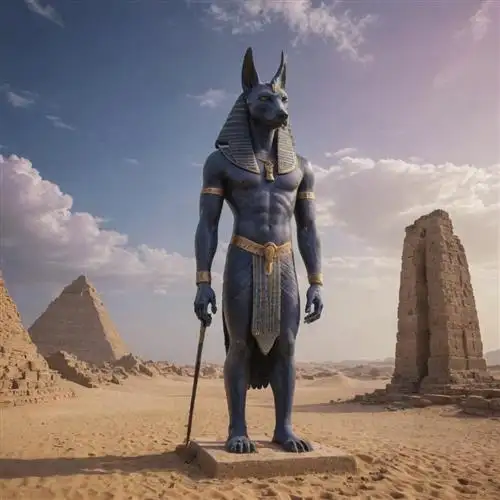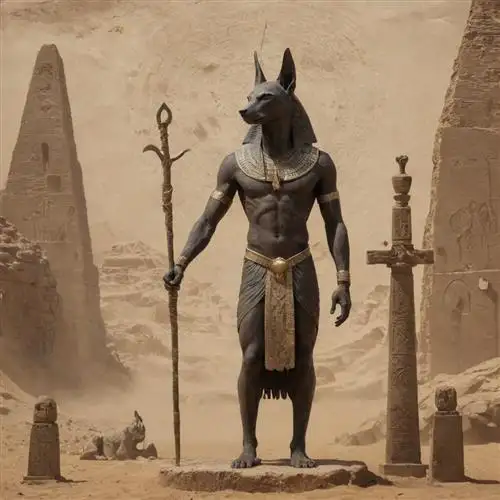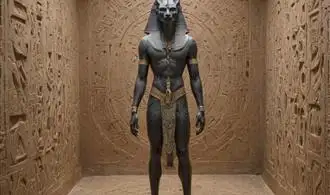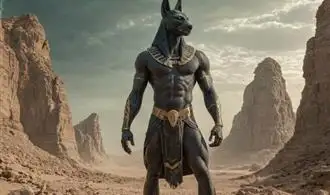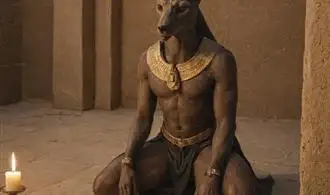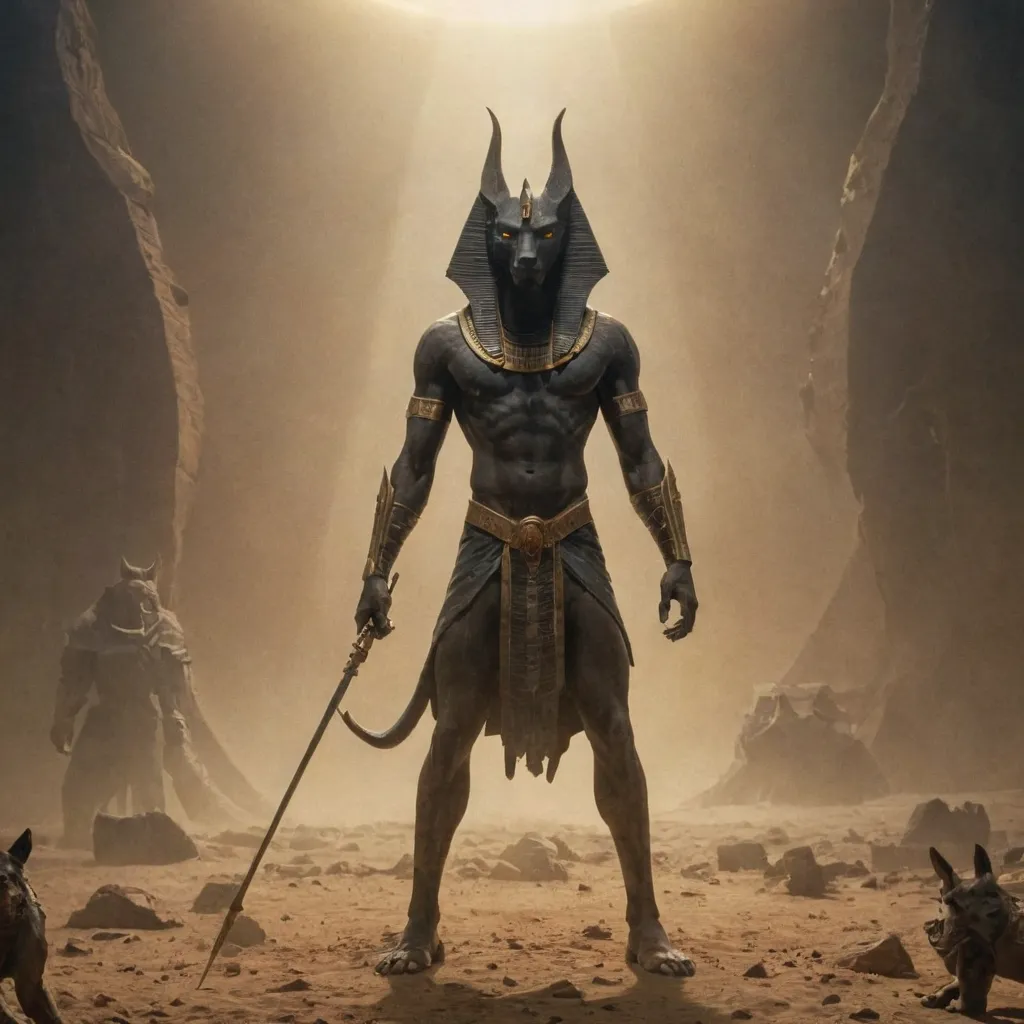
Anubis The Jackal Headed God
Anubis The Jackal Headed God
Anubis, the jackal-headed deity, is one of the most iconic and enigmatic figures in ancient Egyptian mythology. Despite his prominent role in the pantheon, Anubis is often misunderstood or oversimplified by modern audiences. To truly appreciate the depth and significance of this revered god, it is essential to delve into the nuances of his multifaceted nature.At the core of Anubis' identity is his association with the process of mummification and the afterlife. As the god of embalming and the guardian of the dead, Anubis played a crucial role in ensuring the smooth transition of the deceased into the next realm. He was responsible for overseeing the intricate process of mummification, which was believed to be essential for preserving the physical body and facilitating the soul's journey to the afterlife.Beyond his role as the patron of mummification, Anubis was also seen as a protector of the dead. He was often depicted standing guard over the deceased, ensuring their safe passage through the perilous realms of the underworld. This guardianship extended to the judgment of the dead, where Anubis was believed to weigh the heart of the deceased against the feather of truth, determining their worthiness to enter the afterlife.The jackal-headed form of Anubis is itself a subject of much fascination and misunderstanding. The jackal, a scavenger animal commonly found in the deserts of Egypt, was chosen as Anubis' animal form for a reason. Jackals were often observed prowling near burial sites, feeding on the remains of the deceased. This association with death and the underworld led the ancient Egyptians to view the jackal as a symbolic representation of the transition between the realms of the living and the dead.However, Anubis' role was not limited to the realm of the dead. He was also seen as a deity of transitions, guiding the living through significant life events and challenges. As a patron of the underworld, Anubis was believed to possess the knowledge and wisdom necessary to navigate the complex and often-treacherous journey of the afterlife. This made him a revered figure among the ancient Egyptians, who sought his guidance and protection in both life and death.Despite the prominence of Anubis in ancient Egyptian mythology, his true nature and significance have often been misunderstood or oversimplified in modern representations. By delving deeper into the nuances of his role and the symbolic significance of his jackal-headed form, we can better appreciate the depth and complexity of this enigmatic deity and the profound impact he had on the lives and beliefs of the ancient Egyptians.Anubis Role in the Afterlife
The Anubis deity is one of the most significant figures in ancient Egyptian mythology, yet it is often misunderstood and oversimplified. One of the most crucial aspects of Anubis's role is his importance in the afterlife. As the god of mummification and the protector of the dead, Anubis played a vital part in the complex rituals and beliefs surrounding the journey to the afterlife.
Anubis was responsible for the embalming process, ensuring the proper preparation and preservation of the deceased's body. This was a crucial step in the journey to the afterlife, as the Egyptians believed that the soul could not continue its journey without a physical form to return to. Anubis would oversee the entire mummification process, from the removal of the organs to the wrapping of the body, ensuring that the deceased was ready to face the challenges of the afterlife.
Beyond his role in the physical preparation of the body, Anubis was also believed to guide the deceased through the dangerous and uncertain journey to the afterlife. He would stand at the threshold of the underworld, known as the "Hall of Judgement," and would weigh the heart of the deceased against the feather of Ma'at, the goddess of truth and justice. This process, known as the "Weighing of the Heart," determined whether the individual was worthy of entering the afterlife.
If the heart of the deceased was found to be lighter than the feather, it meant that the individual had lived a virtuous life and was granted access to the afterlife. However, if the heart was found to be heavier, it would be devoured by the monstrous Ammit, the "Devourer of Souls," and the individual would be condemned to eternal oblivion.
Anubis's role in this process was crucial, as he was responsible for overseeing the weighing of the heart and ensuring that the deceased was judged fairly. His presence at the Hall of Judgement was a constant reminder of the importance of living a righteous life and the consequences of moral failings.
Furthermore, Anubis was believed to continue to watch over the deceased in the afterlife, protecting their physical form and guiding their soul through the challenges that lay ahead. He was often depicted as a jackal-headed figure, a symbol of his role as the guardian of the dead and the protector of the mummified body.
Anubis Symbolism and Significance
Anubis, the ancient Egyptian god associated with mummification and the afterlife, is a figure that has long captured the imagination of scholars and enthusiasts alike. Yet, despite his central role in Egyptian mythology, Anubis is often misunderstood or oversimplified. To truly appreciate the depth and significance of this deity, it is crucial to delve into the rich symbolism and cultural importance that he embodied.
At the core of Anubis' symbolism is his role as the guardian of the dead and the protector of the deceased's journey to the afterlife. As the god of embalming and mummification, Anubis played a vital part in the elaborate funerary practices of ancient Egypt. He was responsible for overseeing the mummification process, ensuring that the deceased's body was properly prepared for the journey to the afterworld. This reverence for the sanctity of the physical form reflects the Egyptian belief in the importance of preserving the body as a vessel for the soul.
But Anubis' significance extends far beyond his role in the mortuary rituals. He was also seen as a deity of transition, guiding the souls of the deceased through the dangerous and uncertain path to the afterlife. This liminal aspect of Anubis' character is often overlooked, as he is sometimes portrayed solely as a funerary god. In reality, Anubis' role as a psychopomp, or "guide of souls," was crucial in the Egyptian conception of the afterlife, where he would weigh the heart of the deceased against the feather of truth, determining their worthiness to enter the realm of the dead.
Moreover, Anubis' symbolic associations extend to the realms of justice and moral judgment. As the overseer of the weighing of the heart ceremony, Anubis was responsible for ensuring that the deceased had lived a righteous life, upholding the principles of ma'at (cosmic order and truth). This connection between Anubis and the scales of justice further reinforces his role as a guardian of the moral and ethical fabric of Egyptian society.
Beyond his funerary and judicial functions, Anubis was also revered for his protective abilities. As the god of embalming, he was believed to possess the power to ward off malevolent forces and ensure the safety of the deceased in the afterlife. This aspect of Anubis' divinity is often overlooked, but it underscores the multifaceted nature of his symbolism and the depth of his cultural significance.
To truly understand the Anubis deity, one must delve into the intricate web of symbolism and cultural meaning that surrounds this enigmatic figure. From his role as the guardian of the dead to his associations with justice, transition, and protection, Anubis represents a complex and nuanced aspect of ancient Egyptian religious thought. By exploring the deeper layers of his significance, we can gain a richer appreciation for the enduring legacy of this most misunderstood Egyptian god.
Anubis Worship and Rituals
The worship and rituals associated with the Egyptian deity Anubis were a integral part of the ancient religious landscape. As the god of embalming, Anubis played a pivotal role in the afterlife journey of the deceased. Understanding the intricate practices surrounding Anubis can provide valuable insights into the beliefs and customs of ancient Egypt.
One of the most significant aspects of Anubis worship was the mummification process. Anubis was believed to oversee the preparation of the deceased body, ensuring a successful transition to the afterlife. Embalmers would invoke the protection and guidance of Anubis as they carefully removed the internal organs, dried the body, and wrapped it in linen. This meticulous process was not merely a practical necessity but a sacred ritual that honored the deceased and facilitated their journey to the afterlife.
The rituals associated with Anubis also extended beyond the mummification process. Temples dedicated to Anubis would have been the site of various ceremonies and offerings. Worshippers would bring offerings of food, incense, and other valuable items to seek Anubis' favor and protection. Prayers and invocations would be made, asking Anubis to guide the deceased through the challenges of the afterlife and ensure their safe passage to the realm of the dead.
In addition to the temple rituals, Anubis was also honored in private settings. Individuals might have small statues or amulets depicting Anubis in their homes, using them as focal points for personal devotion and prayer. These private acts of worship reinforced the belief that Anubis was a constant and accessible presence, always ready to provide guidance and protection.
The rituals and practices associated with Anubis were not limited to the deceased but also extended to the living. Anubis was believed to have the power to protect the living from various dangers, including illness and misfortune. Worshippers might seek Anubis' intervention through prayers, offerings, or the use of amulets and talismans bearing the god's image.
The role of Anubis in the afterlife was also reflected in funerary rites and burials. Anubis was often depicted standing guard over the deceased, ensuring the safe passage of the soul to the next life. Statues of Anubis were placed in tombs, and the god's image was often incorporated into the decoration and design of sarcophagi and coffins.
Anubis Misconceptions and Misunderstandings
Anubis, the jackal-headed deity, is one of the most iconic and recognizable figures in ancient Egyptian mythology. However, this iconic status has also led to a proliferation of misconceptions and misunderstandings surrounding the true nature and significance of this powerful god. In this article, we will delve into the heart of these misunderstandings and explore the deeper, more nuanced aspects of the Anubis deity.
One of the most common misconceptions about Anubis is that he was solely a god of death and the afterlife. While it is true that Anubis played a crucial role in the funerary rituals and the journey of the deceased into the afterlife, his domain was much more expansive. Anubis was also revered as a guardian of cemeteries, a protector of the dead, and a patron of embalmers and morticians. He was responsible for the mummification process, ensuring the safe passage of the deceased into the next life.
Another widespread misunderstanding is the belief that Anubis was a dark or sinister deity. This perception likely stems from his association with death and the underworld, as well as his jackal-like appearance. However, Anubis was not a malevolent or fearsome god. Rather, he was seen as a compassionate and benevolent figure, one who guided and protected the dead on their journey to the afterlife. His role was to ensure a safe and successful transition, not to inflict harm or punishment.
Additionally, many people mistakenly believe that Anubis was the sole deity responsible for the judgment of the dead. This is a misconception, as the process of judgment was a complex and multifaceted ritual, with Anubis playing a specific role within it. The weighing of the heart ceremony, where the deceased's heart was weighed against the feather of truth, was presided over by the god Osiris, with Anubis serving as the facilitator and overseer of the process.
One of the most intriguing misunderstandings surrounding Anubis is the notion that he was a sinister or demonic figure, associated with the darker aspects of death and the underworld. This perception is likely influenced by modern popular culture, which has often depicted Anubis in a more ominous or menacing light. However, in ancient Egyptian mythology, Anubis was not seen as a malevolent or evil deity, but rather as a complex and multifaceted figure, embodying both the sacred and the practical aspects of death and the afterlife.

